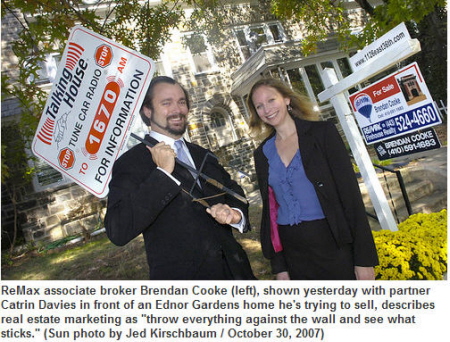February 2018 RE/MAX National Housing Report on MLS Data from 53 Metro Areas
Denver, CO – Feb. 16, 2018 (PRNewswire) The record speed of January home sales may signal that buyers aren’t waiting around for the typical spring selling season to begin. Despite home sales being down 2.8% year-over-year, the February RE/MAX National Housing Report shows homes sold in a mere 60 days last month, marking the fewest Days on Market of any January in the nine-year history of the report. To access the housing report infographic, visit: https://rem.ax/2GdTVcL.

Days on Market typically decline each month leading into the heart of the spring and summer buying season in July and start increasing monthly as fall progresses into winter.
“We recently saw the groundhog predict six more weeks of winter, but January housing numbers are telling a different story,” said RE/MAX CEO Adam Contos. “It looks like the spring selling season may have arrived early because home buyers are not slowing down. The speed of this market is on pace with what we saw in the prime of the 2017 selling season.”
The Median Sales Price of $224,000 also set a January record — up 6.7% year-over-year. Out of 53 markets, 51 posted gains, marking January as the 22nd consecutive month of year-over-year price increases dating back to April 2016.
Closed Transactions
Of the 53 metro areas surveyed in January 2018, the overall average number of home sales decreased 27.4% compared to December 2017 and decreased 2.8% compared to January 2017. Twenty of the 53 metro areas experienced an increase in sales year-over-year including, Milwaukee, WI, +13.6%, Albuquerque, NM, +12.8%, Kansas City, MO, +12.5%, and Boise, ID, +12%.
Median Sales Price – Median of 53 metro median prices
In January 2018, the median of all 53 metro Median Sales Prices was $224,000, down 4.7% from December 2017 but up 6.7% from January 2017. Billings, MT, was the only metro area to see a year-over-year decrease in Median Sales Price at -6.4%. Eleven metro areas increased year-over-year by double-digit percentages, with the largest increases seen in Boise, ID, +18.7%, Las Vegas, NV, +16.2%, San Francisco, CA, +14% and Orlando, FL, +13.8%.
Days on Market – Average of 53 metro areas
The average Days on Market for homes sold in January 2018 was 60, up three days from the average in December 2017, and down six days from the January 2017 average. The metro areas with the lowest Days on Market were San Francisco, CA, at 31, Omaha, NE, at 34 and Nashville, TN at 36. The highest Days on Market averages were in Augusta, ME, at 109, Chicago, IL, at 96 and Hartford, CT, at 93. Days on Market is the number of days between when a home is first listed in an MLS and a sales contract is signed.
Months Supply of Inventory – Average of 53 metro areas
The number of homes for sale in January 2018 was down 4.8% from December 2017, and down 14.8% from January 2017. Based on the rate of home sales in December, the Months Supply of Inventory decreased to 3.4 from December 2017 at 3.7, as well as decreased compared to January 2017 at 3.8. A 6.0-months supply indicates a market balanced equally between buyers and sellers. In January 2018, 49 of the 53 metro areas surveyed reported a months supply at or less than 6.0, which is typically considered a seller’s market. The metro areas that saw a months supply above 6.0, which is typically considered a buyer’s market, were Birmingham, AL, at 8.2, Augusta, ME, at 7.5, Miami, FL, at 7.1 and New Orleans, LA, at 6.8. The markets with the lowest Months Supply of Inventory continued to be in the west with Denver, CO, San Francisco, CA and Seattle, WA at 1.1.
Contact
For specific data in this report or to request an interview, please contact newsroom@remax.com.
About the RE/MAX Network:
RE/MAX was founded in 1973 by Dave and Gail Liniger, with an innovative, entrepreneurial culture affording its agents and franchisees the flexibility to operate their businesses with great independence. Over 115,000 agents provide RE/MAX a global reach of more than 100 countries and territories. Nobody sells more real estate than RE/MAX, when measured by residential transaction sides. RE/MAX, LLC, one of the world’s leading franchisors of real estate brokerage services, is a wholly-owned subsidiary of RMCO, LLC, which is controlled and managed by RE/MAX Holdings, Inc. (NYSE: RMAX). With a passion for the communities in which its agents live and work, RE/MAX is proud to have raised more than $157 million for Children’s Miracle Network Hospitals® and other charities. For more information about RE/MAX, to search home listings or find an agent in your community, please visit www.remax.com. For the latest news about RE/MAX, please visit www.remax.com/newsroom.
Description
The RE/MAX National Housing Report is distributed each month on or about the 15th. The first Report was distributed in August 2008. The Report is based on MLS data in approximately 53 metropolitan areas, includes all residential property types, and is not annualized. For maximum representation, many of the largest metro areas in the country are represented, and an attempt is made to include at least one metro from each state. Metro area definitions include the specific counties established by the U.S. Government’s Office of Management and Budget, with some exceptions.
Definitions
Transactions are the total number of closed residential transactions during the given month. Months Supply of Inventory is the total number of residential properties listed for sale at the end of the month (current inventory) divided by the number of sales contracts signed (pended) during the month. Where “pended” data is unavailable, this calculation is made using closed transactions. Days on Market is the number of days that pass from the time a property is listed until the property goes under contract for all residential properties sold during the month. Median Sales Price is the median of the median sales prices in each of the metro areas included in the survey.
MLS data is provided by contracted data aggregators, RE/MAX brokerages and regional offices. While MLS data is believed to be accurate, it cannot be guaranteed. MLS data is constantly being updated, making any analysis a snapshot at a particular time. Every month the RE/MAX National Housing Report re-calculates the previous period’s data to ensure accuracy over time. All raw data remains the intellectual property of each local MLS organization.

